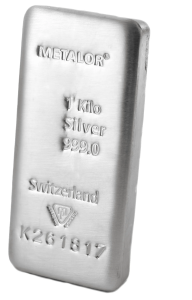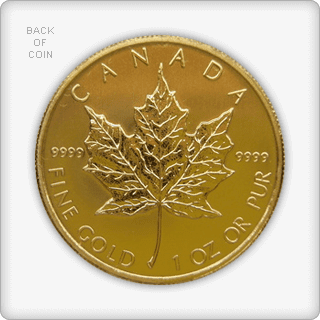It is often said that investors tend to invest in bullion coins, so that they may maximise the value of gold for the price they pay. Likewise, collectors buy proof versions of coins. In this article, we will explore what is a proof coin and why they are highly valued amongst collectors.
What is a proof coin?
A publisher would like to study the edited, proofed, and ready to go to the print version of an author’s work before mass copies are printed. In the same way, a proof coin or a set of coins is produced initially to secure approvals from important authorities like the Ministry of finance, the Chancellor of the Exchequer and the Directors of the Mint. Apart from procuring these important approvals, a proof coin can be used to check the accuracy of the dies used in minting the coins.

Silver proof coins
The dies are specially polished to produce the proof coin set. It is quite different from a mass-produced bullion coin. A proof coin has an extremely high-quality finish and a polished shine. The edges are sharp, and the design stands out magnificently. The manufacturing dies are often chemically treated to create a frosty finish in certain areas on the face of the coin.
When the coin is presented in its case, there is a mirror-like appearance, which is appealing to most coin lockers. Historically, they were usually archived after approvals had been procured and the coin issued to the general public. However, the Royal Mint today releases limited editions of proof coin sets that can be purchased by collectors. Commemorative issues are also interesting to the general public, who would pay a premium to procure these coins.
Why are collectors buying proof coins?
First of all, many collectors are well aware of what is a proof coin. The mintage of these sets is limited and attractive to collectors, simply because their rarity, may go up in the years to come. The aesthetic look and feel of a proof coin, with its high-quality finish and attractiveness make it desirable to collectors. Needless to say, these coins are sold with hefty premiums.

A set of 1887 Queen Victoria proof coins
Proof coins as an investment
Bullion coins have always appealed to investors as a better bet. Bullion coins come with an uncirculated finish that does not have the finesse of a proof coin. However, these coins offer the investor an opportunity to acquire gold or silver at a cheaper price per gram than paying huge premiums for a proof coin.
Download our free step-by-step guide HERE before you buy gold and silver coins
An important problem also crops up at the time of sale. Dealers are unprepared to repay the premiums paid on these coins. The coins are therefore valued for their gold content, and the premium originally paid for the proof version of the coin is lost. Due to these factors, a proof coin is best acquired as a collectable or given to someone as a present.
It is also important to note that many dealers will offer good discounts when you place an order for a large number of bullion coins. These deals do not apply to proof coins. The premium paid is largely due to the finishing, detail, production costs and limited mintage. So, if you are building a gold portfolio, it is far better to invest in the gold Britannia or the Sovereign, both of which are bullion coins with abundant availability, available at low premiums.
Find out more from Physical Gold
Our precious metal experts at Physical Gold have a great deal of knowledge that you can benefit from. We are one of the country’s largest and most reputed online dealers. We can leverage our expertise and assist you in getting the best deals for gold and silver coins. Please call us on (020) 7060 9992 for a chat. You can also reach out to us via our website.
Image credits: Matthew Heinrichs and Wikimedia Commons
The Maple leaf gold coin
Country: Canada
Face Value: $50 CAD (when first issued)
Gold Content: 1 ounce (31.10g)
Purity: 1979–1982 = 99.9% (24 karat), 1983–Present =99.99%
Gross Weight: 31.103g
Coin Diameter: 30.00mm
First year of issue: 1979
The Canadian Maple Leaf gold coin was first issued as the official bullion coin of Canada in 1979. This coin is 24 karat gold with an original face value $50 CAD, however, it’s market value fluctuates considerably depending on the spot price of gold and current global demand for bullion coins. It is produced annually by the Royal Canadian Mint and is available in both bullion and proof versions.
The Royal Canadian Mint promote this coin as the international symbol of purity. They were the first mint to produce a 24 karat bullion coins and it is one of the purest gold coins of regular issue in the world. Since then, the Maple Leaf gold coin has become the standard of quality against which all other bullion coins are measured.
[button size=”medium” style=”primary” text=”Shop Gold Maple” link=”https://www.physicalgold.com/buy-gold-coins/gold-maple-coins” target=”_blank”]
At the time Maple leaf coins were first introduced, the only other bullion coin available was the Krugerrand. Due to the apartheid regime in South Africa at the time, however, the Krugerrand was not widely available to the majority of people as many countries boycotted South African imports. This meant that Canadian maple leaf coins became one of the first bullion coins to be available exclusively for investment purposes. To this day the Maple Leaf is still one of the most popular bullion coins, sought after by collectors and investors all over the world.
Between the years of 1979–1982 this coin was issued with 99.9% purity but from 1983–present this has risen to 99.99%, virtually no alloy at all. In fact, Canadian maple leaf coins were the first bullion coin in the world to be produced with a standard of .999 purity, just one of the reasons why they are globally recognised as a safe and reliable investment opportunity. They are produced to an extremely high standard by the renowned mint so offer a beautiful choice at reasonable prices for those with an eye for splendour.
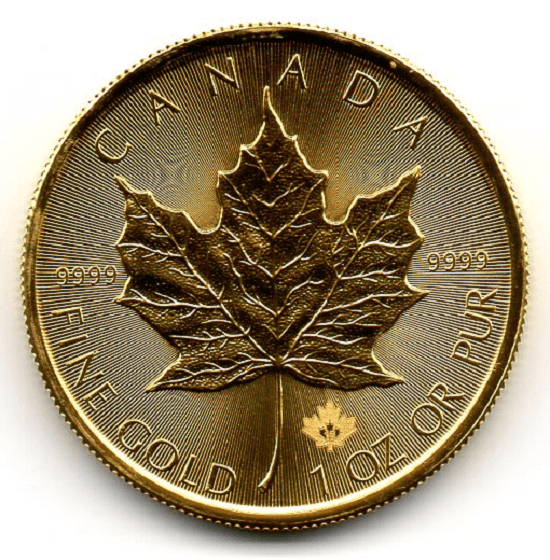
Canadian 1oz Maple Leaf Coin
Features of the Maple Leaf coin
The design of the Maple leaf coin has not changed since the creation of the first gold Maple leaf in 1979. The obverse of the maple leaf gold coin displays a profile portrait of Queen Elizabeth II, with the value and the year of issue. Since 2005 the portrait has been updated to depict Susanna Blunt’s famous portrayal of her Majesty at the age of 79. The reverse displays the Canadian national emblem, the Maple Leaf. As this symbol is also featured on the national flag this coin is distinguished and recognisable worldwide.
[button size=”medium” style=”primary” text=”Shop Silver Maple” link=”https://www.physicalgold.com/buy-gold-coins/gold-maple-coins” target=”_blank”]
The Maple Leaf is also available in different sizes and denominations. Aside from the standard 1oz coin, these include ½ oz coins, ¼ oz coins, 1/10 oz coins, 1/20 and 1/25th oz coins. There is also now a 1-gram Maple Leaf coin available.
Due to the Canadian Maple Leaf Coin’s
growing popularity, additional security features have recently been added, making it one of the securest forms of gold investments around. In 2013, a laser engraved maple leaf with a microscopic numeral displaying the coin’s year of issue was added to the reverse of the coin. In 2015, radial lines were also added to the background on both sides of the coin.
Demand for Maple Leaf coins
Maple leaf coins are held in high regard with collectors all over the world. As one of the very first bullion coins to be widely available, the Maple leaf has an established reputation among bullion investors and many of them appreciate its guaranteed high level of purity and heightened security detail. The Royal Canadian Mint is also world-famous and highly respected amongst numismatics. The mint strikes more than 1 billion coins annually. In addition to its popular Canadian Maple Leaf series of gold, silver, and platinum bullion coins, the mint also strikes currency for as many as a dozen other countries.
Image Sources: Wikipedia
The Krugerrand
County: South Africa
Face Value: 10 Rands
Gold Content: 1 ounce (31.104g) – Alloyed with copper
Purity: 917/1000 (22 karat)
Gross Weight: 33.9305
Coin Diameter: 32.70mm
First Year of issue: 1967
The Krugerrand is the 22-karat bullion coin of South Africa. It was the first gold coin produced to contain precisely one ounce of fine gold, and provided a vehicle for the private ownership and trade of gold. By 1980 the coin accounted for 90% of the gold coin market. The success of the Krugerrand led to many other gold-producing nations minting their own bullion coins.
Sell your gold coins at the highest price. Find out how…
With over 54 million Krugerrands in circulation it is believed to be the most widely owned gold bullion coin in the world. The sheer number of coins on the market coupled with the coin’s global recognition, mean it is one of the least expensive coins to buy. The intention for the Krugerrand was for it to be circulated as currency, for this reason the coin was minted in 22 karat gold, with copper as a strengthening alloy. Its durability is one of it’s main selling points now. With one of the most active secondary markets of any gold coin, the vast majority of Krugerrands we see of 30-40 years of age are still in fantastic condition.
[button size=”medium” style=”primary” text=”Shop Krugerrand” link=”https://www.physicalgold.com/shop/other-coins/buy-foreign-gold-coins/best-value-gold-krugerrand-1oz/” target=”_blank”]
Due to the huge number in circulation coupled with it’s global recognition, the coins provide unparalleled liquidity. As an investment into a physical asset this is very important. Just like when buying and selling a house, it is not only the price you manage to purchase the property at, but also the sale price which will determine your profit. If you buy a house at a great price but it’s on a main road and appeals only to a very niche market, then it is more difficult to sell and the eventual sale price will inevitably be affected. The same goes for gold. Buy Krugerrands and you’ll be able to sell the coins at any time, maximising your chances of securing a good price.
Despite the coin’s legal tender status, the coin was illegal to import in many Western countries during the 1970s and 1980s due to economic sanctions against South Africa for its policy of apartheid. In 1994 these sanctions ceased when South Africa dropped this policy.
The coin is so named because the obverse features the profile of statesman Paul Kruger, four-term president of the old South African Republic. The reverse displays one of the national symbols of South Africa the springbok which is the African name for an antelope.
Gold Krugerrand
At Physical Gold we specialise in the Gold Krugerrand because of its durability and wide circulation – making it popular all over the world. Since its introduction in 1967 and following the abolishment of the apartheid policy in 1994, the coins have become popular all over the world and remain the most popular and widespread bullion coin available.
Krugerrand Coins
There have been more than 50 million of the coins minted since its first minting in the sixties – more than all other bullion coins combined. It is one of the most well known gold products in the world, thanks to its liquidity and status it brings to the owner.
Before the introduction of the coin, gold was only available in bars, making it too expensive for some. As the Krugerrand has legal tender status, the UK is allowed to import it without paying import taxes, duties and VAT – making the Krugerrand cheaper to buy.
Sell Krugerrand
Because of their wide circulation, the liquidity is better than any other gold coin. This makes it much easier to sell the coins whenever you want to cash in on your investment and still receive a good price for it.
In terms of gold investment, the process to buy and sell Krugerrand is one of the easiest routes of investing in the precious metal and ensures you’ll have the best chance of getting the most for your money. In terms of gold bullion coins, the Krugerrand is at the top of its game.
What is a Gold Britannia worth?
The value of a gold Britannia coin is based on the underlying spot price on the market, combined with the supply and demand for the particular coin. Generally, the 1oz gold coin will fetch around 96-98% of the current spot gold price. Gold Britannia coins have only been around since 1987, but certain years of issue are harder to source than others, so their value is higher than the current year of issue, sometimes by up to 5%
The spot price isn’t the only thing that affects the value of a Britannia
There are other factors that can affect the value of the Britannia. It is a larger coin and provides investors with more gold content at its price. This is simply due to the fact that larger gold coins enjoy lower production costs. When we calculate the cost of production against its price, we can see that the Britannia is available at a lower price per gram than smaller coins such as Sovereigns.
Easy availability and low premiums
A good thing about investing in the gold Britannia is that the coin does not command any kind of historical or numismatic premium. Apart from a few difficult to acquire years, most Britannia coins are easily available. You can also avail of bulk discounts if you order larger numbers. This enables you to acquire a larger amount of gold for your money, making it a lucrative investment.
Market supply and demand
During periods of intense economic, political or social turmoil, demand for gold tends to soar. We’ve experienced this repeatedly over the years as the economy goes through it’s various cycles. In particular, demand for gold investment coins such as the Britannia has been at all time highs during the recent Covid pandemic. While these ‘black swan events’ occur, it’s common for demand to out-strip supply significantly. The Royal Mint struggle to increase production sufficiently due to capacity restrictions.
In these circumstances it’s common that the value of Britannias increases sharply. Not only does the underlying gold spot price increase rapidly due to the increased demand in the gold market. But also, premiums rise to reflect the dynamic. Sellers benefit from obtaining higher premiums (near or even above the spot price), but buyers are forced to pay 2-5% extra.
A highly tax-efficient investment
Most investors simply focus on the price and ignore other key factors like the impact of taxes. Of course, all investment-grade gold is VAT free in the UK and the gold Britannia benefits from this tax-exempt status. Additionally, there is the double advantage of Capital Gains Tax (CGT) exemption, as the Britannia is a UK legal tender coin.

The iconic image of Britannia is shared by the gold and the silver version, pictured here
Currency conversions also affect the price
As you may be aware, the spot price of gold in the international markets is always quoted in US dollars. So, when you buy or sell the Britannia in the UK, this price needs to be converted to Sterling. You will need to divide the price in US dollars per ounce by 31.103. After that, you’ll need to look up the current exchange rate between the US dollar and the GBP. Once you apply the exchange rates, the current price of the coin can be derived. Now, we often see several websites in the UK quoting the per ounce price in GBP. But, you need to be aware that these websites have already done the conversions. So, we can see that it’s not just the movement of the spot price that has an impact on the value of a gold Britannia. Currency price fluctuations will always impact the final price of a gold coin.
Premiums need to be factored in as well
Now that we’ve explored the impact of spot prices and global currencies on the buying and selling price of a gold Britannia, let’s take a quick look at premiums. All gold investments need to be made at a premium, charged above or below the spot price. Premiums are charged to compensate for design, delivery and production costs. So, it’s important to factor this as well when calculating the price of a gold Britannia coin.
A winner on all counts
Ultimately, it’s a great coin to invest in. Once the price has been calculated, it’s important to remember that the gold Britannia enjoys a vibrant secondary market, providing liquidity to your investments. All these factors make the gold Britannia a truly versatile coin.
Contacting Physical Gold
Contacting us couldn’t be easier. Simply visit our Contact Us Page, or call Physical Gold Ltd on 020 7060 9992.
Image credit: Eric Golub
What are fractional gold coins?
The term fractional gold refers to coins that have less than one troy ounce of gold in them. Most numismatists will tell you that coin releases undertaken by large mints around the world include sizes that have less than one troy ounce of gold. The one exception may be the world-renowned Sovereign coin which weighs approximately a quarter of an ounce. Being a ‘full’ Sovereign, it tends not to be referred to as fractional.
When we think about it, it seems like an awfully small amount of gold. So, why should anyone want to invest in fractional gold? Are there any advantages or disadvantages? Why is fractional gold considered to be a hot investment category?
In this article, we will discuss the pros and cons related to buying fractional gold.
What type of fractional gold coins are available?
Most major precious metals mints will produce fractional versions of their flagship one ounce gold coin. Examples of well-known fractional coins from around the world are Krugerrands, Maple Leaf coins, Philharmonics, Eagles and Nuggets. Alongside the 1oz gold coin, there will usually be versions made in half ounce, quarter ounce and tenth ounce weights. Some mints even produce tiny 1/20 oz fractional gold coin. Usually, mintage volumes of fractional coins are far lower than the original 1oz version.
For UK investors seeking to be tax efficient and buy UK coins, there are a number of fractional UK gold coins available.
- Gold Britannia 1/2oz, 1/4oz, 1/10oz
- Gold Half Sovereign, Gold Quarter Sovereign
- Gold Queen’s Beasts 1/4oz
- Gold Tudor Beasts 1/4oz
- Gold Lunar 1/4oz, 1/10oz (limited)
Pros of investing in fractional gold
Its worth considering buying fractional gold coins for several reasons. With gold’s popularity with retail investors growing each year, demand for smaller fractional coins is also increasing. Their many benefits appeal to smaller investors and collectors and mints have responded by producing more fractional coin varieties.
Price
Well, the simplest factor that comes to mind is, of course, the price of the gold. Needless to say, larger and heavier coins are way more expensive. If you’re a numismatist or a hobbyist, you may not want to commit very large sums of money while spending on building your collection. Fractional gold coins allow you to build a collection without breaking the bank.
Download our FREE 7 step cheatsheet to buying gold coins here
Ideal and affordable gifts
Buying gold for a loved one as a gift is becoming more popular as it’s a thoughtful gift which is aesthetically appealing and interesting. With one-ounce gold coins costing upwards of £1,600, these coins can prove too expensive for most gift buyers. The fractional gold coin versions offer the ideal affordable gift option for birthdays, Christmas and special events.
Building your own collection
Building your collection from scratch can be an absorbing experience. So, that’s all the more reason why you need to get more bang for the buck. Investing in fractional gold coins will mean that you’re buying your bullion in smaller sizes and can, therefore, acquire more for the same price. If you keep at it, over and over the years, your collection will grow and you could have a formidable gold coin collection.
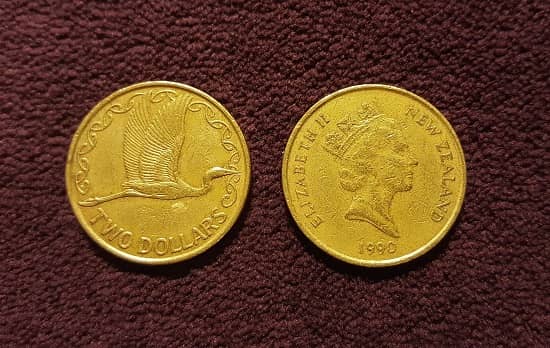
Fractional coins have less than an ounce of gold
Trading in your gold coins
Many collectors frequently sell a few gold coins for a bit of liquidity and cash flow. Fractional gold coins are ideal for this purpose, as it is possible to trade in them without selling off the more expensive coins from your collection. This is why some collectors like to invest in fractional gold coins.
Easy liquidity
Numismatists all over the world are constantly on the lookout for trading opportunities that can help them acquire better coins for their collections. In terms of liquidity, fractional gold coins are great as they offer good bartering opportunities, which is not always possible with gold coins that contain a higher amount of gold, with a larger value.
Cashing in on the higher demand for gold
As the price of gold rises, the value of your fractional gold coins is also likely to increase. As discussed earlier, fractional gold coins are typically cheaper to buy and so, investors looking to make quick returns from the price of gold would buy these coins when the price of gold falls. Later on, as the price rises, they can cash in these coins and get quick returns.
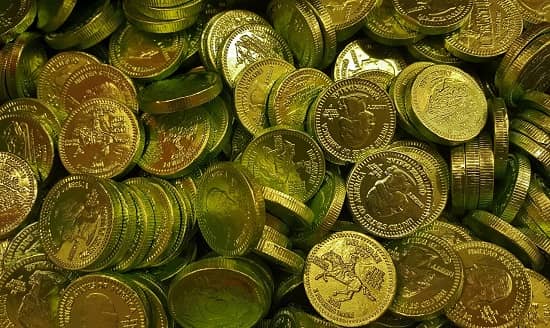
Many investors like to trade in fractional coins due to its price advantage
Hedging against the risk of economic uncertainty
Gold investors are always looking to hedge their risks in the event of a global economic crash. However, liquidity is also an important factor. In the event of a global economic meltdown, most investors would move to gold and the price of gold would rise swiftly, as it did in 2011. At a time like this, if an investor wants to free up some of their capital, fractional coins are ideal as they can be sold to raise funds for smaller purchases. Selling a large amount of gold is not always ideal as the investor may not want to liquidate large amounts of gold, when not required.
Disadvantages of investing in fractional gold coins
Although it might seem that
investing in fractional gold coins is a smart idea for investors, these investments also carry certain risks.
Higher mark-up price
As mints produce large amounts of gold coins, their setup cost for manufacturing these are typically more expensive when it comes to producing gold coins that contain less than an ounce of gold. Usually, 1-ounce gold coins are available at the best price. Therefore, fractional gold coins would always have a higher mark-up price when compared to other gold coins produced by the same mint.
Premium prices
Mints often charge mark-up’s that range between 9 to 15% on fractional gold coins. Many investors see this as an undesirable factor, as the mark-up is not recoverable when trading in the coins.
Talk to our gold experts before you buy fractional gold coins
At Physical Gold, our gold experts have many years of experience in being able to advise investors on products that are ideal for building a gold portfolio, while maximising the opportunity to invest at the best possible capital layout. Call us now on 020 7060 9992 or get in touch with us online to speak with a member of our team. We would always be happy to discuss your investment plans with you and advise you on the best products that suit your investment goals, no matter how small your requirement.
Image credits: Pexels and Pixabay
If you’re going to invest in gold coins, you will need to ensure they are the genuine article, rather than fake. But how can you tell if a coin is nothing more than a convincing counterfeit? Here are eight techniques to help you avoid being scammed.
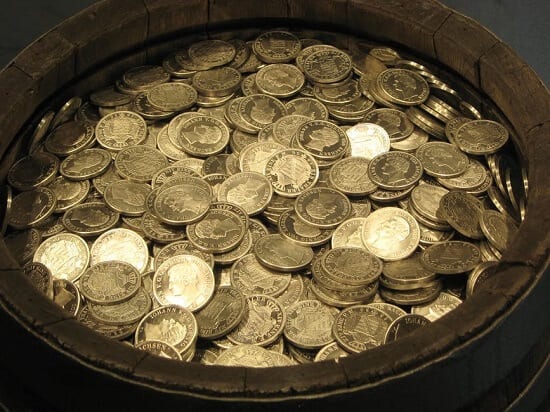
Gold coins
How Do I Detect Counterfeit Coins?
1) Check gold and silver coins with a magnet
Anyone who knows a little about precious metals will already be familiar with the fact that gold and silver do not interact with magnetic forces. This means that a high quality, genuine coin should remain unmoved if exposed to a magnet.
If a coin that is claimed to have a high gold or silver content is attracted to a magnet, then it is likely a counterfeit that contains more steel or iron than advertised.
It’s worth remembering that for this reason, some counterfeiters use other non-magnetic metals like copper and lead. This means the magnet test should be carried out alongside the other techniques if it proves inconclusive.
Download our FREE Insiders Guide to Tax-Free Gold and Silver Investment here
2) Examine coins closely for visual imperfections
Even the best counterfeiters in the world make mistakes, and with a well-trained eye, you should be able to spot the difference between the real deal and a fake. This applies to counterfeits of mainstream coins as well as rare collectable coins for investment.
To do this most accurately, pick up a magnifying glass, or go a step further and invest in a specialised loupe used by jewellers to get a closer look at the surface.
If you don’t have a genuine coin to hand, find a high-resolution image of the coin online and use this to make your comparison.
3) Weigh and measure coins
From modern silver Britannia coins to vintage 
Because major mints are so reliable in these terms, spotting a fake coin is fairly easy. You just need a calliper and a set of electronic scales.
A standard set of kitchen scales will not offer sufficiently accurate measurements, so buy a scale that displays weights to at least two decimal places. Weigh the suspicious coin and if it is out of kilter with official figures by a significant margin, reject it.
Even a coin that is on the ball in terms of weight can still be a fake. By using a calliper to measure its depth and diameter, you will be able to spot any inconsistencies.
Counterfeiters find it almost impossible to create the perfect phoney coin which both weighs the same as the currency it is spoofing and also has the same dimensions. With the right kit, you can steer clear of dodgy deals.
4) Stack suspicious coins
Another obvious sign that a coin is not of sound origin can be seen in the relief. Even small variations in the height of the relief can become apparent with a straightforward stacking test.
All you need to do is place the coin in a small stack with other examples of similar heritage. Real coins will stack neatly and remain stable, while fakes that are not struck with the same attention to detail or high-quality craftsmanship will teeter, totter and tumble over.
Identifying uneven relief height using this technique does require that you have access to real coins of the same age and denomination. This might limit its usefulness if you are new to investing in or collecting coins, but will help those who are expanding an existing hoard.

Find fake coins with the stack test
5) Ping silver and gold coins
This technique is specific to gold and silver coins as a result of the properties of the metals and the noise that coins make when they collide with a hard surface.
Pinging is a straightforward test for valuable coins, as the sound produced by silver and gold as they hit a tabletop, or are struck against another coin, is unique. While coins made with lesser metals, including counterfeits, will sound dull when dropped, a genuine coin will ring out for longer and produce an unforgettable high-frequency sound.
Prepare yourself to scrutinise potential coin purchases by performing the ping test on a gold or silver coin you know to be genuine, or check audio examples online. That way you’ll have a fixed idea of what to listen out for later on.
6) Place an ice cube on the coins
Gold is a great conductor of heat, silver even more so. That means as soon as an ice cube comes in contact with the surface of a gold or silver coin, it will begin to turn back into liquid water.
If a coin is made of a less conductive and less valuable metal, this process will not begin as quickly. Try this test out with genuine gold and collectable silver coins to see what the reaction should look like.

Historic gold coins
7) Check the specific gravity of gold and silver coins
This is a far more technically advanced test than the others covered so far, which makes it a little harder to recommend to the average coin investor. However, arming yourself with as much knowledge as possible is always a good thing, so understanding the specific gravity test will be helpful for everyone.
The specific gravity of gold and silver will be unique and thus different from that of other metals. You can calculate the expected relative density of a coin made of a precious metal, then test it in real time using a set of scales, a container and some distilled water.
Weigh the coin, then fill the container with the water and place it on the scales, before resetting the measurement to zero. Tie a small length of thread around the coin and slowly place it into the water until it is entirely beneath the surface, but not touching the bottom of the container. Take a note of the weight that has been added and then divide it by the ‘dry’ weight of the coin you took earlier.
For gold, the specific gravity you are looking for is 19.3 for a completely pure sample. For silver, it’s 10.49.
8) Work with respected silver and gold coin dealers
If you want to avoid all of the complications that come with trying to detect counterfeit coins under your own steam, the best option is to only buy from dealers that have a good reputation.
This isn’t just about avoiding first-hand contact with con artists, but also about building up a trusting relationship with a company like Physical Gold which you can rely on for all your future precious metal investment needs.
Most of all you should avoid coins that are being sold well below their market value, or being pushed upon you by a dealer who seems eager to get the sale over with as quickly as possible. The signals of an attempt to shift fake coins should be clear, so long as you are willing to look for them and don’t fall for a deal that’s too good to be true.
Call or email Physical Gold for more coin advice
Our experts know everything there is to know about gold and silver coins, such as Sovereigns and Britannias. So, if you are thinking about investing and want more information, then the best option is to get in touch. Make a quick phone call to 020 7060 9992 or email us for outstanding coin advice.
Image Credits: Pixabay, Pixabay, PickPik, Pix4Free and Pixabay.
How much is a Sovereign worth?
Victorian Gold Sovereign coins can make a wonderful gift or investment and are one of the most popular forms of physical gold.
But what are the Sovereigns worth?
With the price of gold moving steadily upwards over the years and money very tight for many of us, it could be time to dig out those coins we were handed down by our Grand Parents to raise some much-needed funds. If you’re lucky enough to have been given the coins, you’ll see why Sovereigns are such a good investment as the price has risen dramatically.
Do you own one of the 10 best British gold coins in history?
1. Underlying Gold Price
We always start deriving the value of a Victorian Gold Sovereign coin from the underlying gold price, known as the spot price. This price is generally quoted in various currencies in ounces and grammes and acts as a benchmark to value the various types of gold. The value of a Victorian Gold Sovereign will be at a premium or discount to this benchmark – with the first step being to multiply the ounce spot price by 0.2354 (which is the gold weight of a Sovereign coin in ounces). The underlying gold price values all gold-based coins including Gold Sovereigns as well as Gold Britannias.
2. What sort of Victorian Gold Sovereign do I have?
It’s important to note that not all Victorian Sovereign coins are valued the same. 95% of them will likely fetch the same price regardless of the year of issue. However other factors to consider would be the condition of the coin, the year of issue and the rarity of the coin. For instance, there are 3 varieties of Victorian heads available, each of which may attract different collectors or buyers (Young Head, Jubilee Head, Old Head).
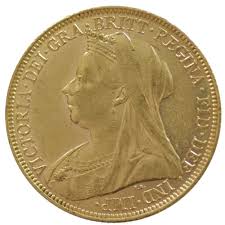
The Victoria Old Head Sovereign
Why does this matter?
With Victorian holding the record for longest British female monarch, up until recently when Queen Elizabeth took her crown (sorry!), the Sovereigns issued during her extensive reign were updated twice. Obviously, the Young head portrait represents the early years of her reign when she was a young woman. Therefore they’re the oldest Victorian coins of the three and worth the most. Prices for young head coins can be around 15-20% than later portraits. These coins are also unique as they were produced in what’s called ‘coin alignment’ This means that the portrait side and reverse side are upside down to each other.

The Young Head Victorian Sovereign trades above the other two portraits
How about the later versions?
The jubilee head was the next version to be launched 
Old Head Victorian gold Sovereign value
The Old Head Victorian coin, also known as the veiled head due to the portrait featuring the monarch wearing a veil rather than a crown, is generally the least valuable of the three versions. It’s the most recent edition so has less history about it and there is a plentiful supply. Generally, we tend to see relatively stable premiums for these coins. Because of this, they can be a really good value way of adding Victorian Sovereigns to your gold investment collection without having to pay the high premiums of the rarer coins.
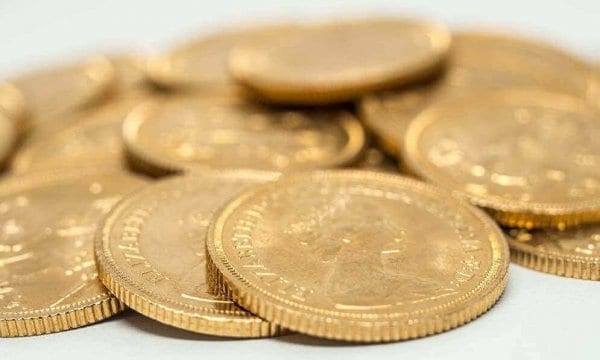
Condition of Sovereigns will be a value factor
What else do I need to know?
Generally, the second-hand Sovereign market will provide a good price for Victorian Sovereigns as long as there isn’t visible damage to the coin or small pieces missing. Clearly, a coin of over 100 years in age isn’t expected to be in pristine condition. You may want to check whether your Victorian coin falls into the 5% of Sovereigns worth significantly more than others. If your coin is a shield back, then this could instantly demand a premium over regular coins. Years of low print runs (and therefore rarity) will also command a further premium.
Read our article on which gold Sovereign coins are the most valuable.
3. Mint Marks
Of course, sometimes the devil is in the detail. If you look closely at Victorian Sovereigns even of the same year and portrait, they’re not necessarily identical or command the same price. Their worth can also vary due to mint marks. These can be difficult to see but basically, a letter will depict which mint the coin was produced in. The Young Head and Jubilee Sovereigns were minted amongst three different factories, namely – London, Melbourne and Sydney. The Old Head coin added Perth Mint to the production list. Interestingly, this reflected Britain’s growing empire, with the Sovereigns to follow in the Edwardian and Georgian eras, also being minted as far afield as Canada, South Africa and India.

Examples of mintmarks
How can I benefit?
Depending on which branch mint the coin was made, certain coins can be worth more, depending on the quantity produced by each mint. For instance, while the various Australian mints produced Sovereign coins for between 30 and 50 years, Ottowa and Pretoria mints only produced for around a decade, with Bombay only minting during 1918!
Mint marks to look out for are London (L), Sydney (S), Melbourne (M), Perth (P), Ottowa (C), Bombay (I) and Pretoria (SA).
4. Timing
Exactly when you choose to sell or value your Victorian Sovereign will impact its value. We’ve already spoken about the underlying gold price, and how the worth of any gold bar or coin is calculated from that point first. Clearly selling your Gold Victorian Sovereign when the gold price is high will dramatically enhance the worth of your coin. But there are two other timing elements which play a role.
Market sentiment
The supply and demand dynamics of gold are fluid. In other words, there are times when supply is particularly tight, perhaps due to mine closures or investors hoarding their gold. Other times, we see plentiful supplies of even the more numismatic gold coins. Similarly, demand can fluctuate greatly. In particular, we experience the same theme time and again, that demand for gold rises when there’s economic or political unrest and then declines during periods of economic prosperity and global peace.
So how can I actually use this?
Intuition and common sense tell us one golden rule with investing. Buy low and sell high. Simple! However, with gold investing, retail buyers tend to buy gold as the price is rising or already high as they’re seeking a safe haven. When newspaper headlines feature stories of impending banking crises, Brexit disasters and world wars, retail investors buy gold coins and bars as security against possible stock market crashes and property price declines. Unfortunately, they’re buying at high prices as everyone else is also looking to purchase.
Conversely, when equity and property markets do well and political news is quiet, the gold price falls. When this happens, many investors sell their gold as they feel the bad times are over. Again, the timing isn’t great as they’re selling at a low price.
But it gets worse because dealers will react to supply-demand dynamics, further amplifying the movement of the market. In other words, when everyone is selling, dealers will pay lower premiums for Victorian coins as there’s a spike in supply and fewer buyers in the market. When everyone is buying and very few offloading Victorian Sovereigns, premiums go up to reflect the difficulty in sourcing the coins.
Just like the smart money – think hedge funds and central banks, try to buy your gold sovereigns when the price is low and everyone else is selling. If you can, sell them when the market is high and everyone else is helping push up premiums.
Which price point to take
If you’re looking to sell your Victorian gold Sovereign, make sure you agree with the buyer if the price is fixed or set on either the live gold spot price or the LBMA gold fixing. On a volatile day with lots of economic news releases, the gold price can fluctuate considerably. The difference between fixing a price on the morning fix, afternoon fix or live spot price, can have a huge impact on the value of your Sovereign.
Watch our YouTube video and then decide – “Gold Britannias or Gold Sovereigns – which is the best investment?”
5. Who you sell to
Is my coin worth a premium or discount to the spot price?
If your coin is deemed to hold a numismatic value due to the year of issue or design (a value over and above simply the gold content), then it will undoubtedly fetch a premium to the spot price, in some cases up to 75% more. Otherwise, the value of the coin will depend on who you eventually sell to, and the current state and volatility of the gold market.
Selling to ‘Cash For Gold’ sites or a jeweller will undoubtedly achieve the largest discount to the benchmark (the lowest price) as these buyers will seek to melt down the gold and profit from your sale. However, this route may offer the convenience of simply dropping in the coin locally.
Selling to a collector may achieve a high premium as an individual may need your coin to complete a collection. However, you may be waiting for years to find the ‘right’ collector and you also expose yourself to the danger of dealing with the public or small unknown intermediaries.
Selling to a gold dealer should achieve a value close to the spot price while offering both convenience and safety. These coins are tax free in the UK which means gold dealer’s specialising in gold investment have a great need for these coins. Indeed, at the moment supplies of second-hand Sovereigns are particularly tight due to the demand for physical gold, meaning that the brand-new gold Sovereign coins are better valued than old ones.
If you were handed the coin many years ago, you may be delighted to know that a coin worth around £20 when it was given to you 10 years or more ago may be worth more than £400 now.
King George V sovereigns are highly valued amongst numismatics due to being the last gold sovereign in actual circulation before the end of the Gold Standard in Britain. Over the years gold sovereigns have become a standout investment for collectors as they not only represent a significant part of British History but are also considered legal tender in the UK. This means they are Capital Gains Tax exempt.
Why do King George V Sovereigns make a good investment?
Gold sovereigns are one of the finest examples of British craftmanship, 
Up until the first world war, gold sovereigns were still a major part of everyday life. Just days after the start of the war in August 1914, however, people were urged to donate their gold coins. Sovereigns continued to be mined overseas but this period marked the end of an era for what had been one of the most important coins in British History. After the gold standard was abolished, there was less of a need for gold sovereigns and so the number of coins being minted started to go into decline.
Gold Britannias or Gold Sovereigns – which is the best investment? – a Physical Gold Video
It was under George V that the final two branch mints would be opened, one in India and one in South Africa. George V Sovereigns are the only coins to have been produced in six branches of the Royal Mint.
Gold sovereigns are considered semi numismatics. This means collectors buy them for both their bullion content as well as their numismatic (rarity/historical value) Due to the coins everlasting popularity with collectors from all over the globe, gold sovereigns are relatively liquid which means they are easily exchangeable for cash.

1914 George V Sovereign
The 1917 George V Sovereign
The 1917 George V gold sovereign is considered incredibly rare and is highly sought after by many coin collectors. This is due to many of them being melted down after World War I in a bid to help pay off Britain’s war debts to America.
The Ottawa Mint
The branch mint in Ottawa ceased all production of gold sovereigns during George V reign. Gold sovereigns produced at the mint up until 1919, when it closed for good, are considered exceptionally rare and valuable due to the mint producing far fewer sovereigns than other mintages. 1916 sovereigns, in particular, are highly sought after, as only 6119 of them were produced in that year.
Design
George V gold sovereigns were produced in 91.67% fine gold (22 carats). The design of the coin was changed in 1929 to incorporate an inner circle and beading around the outside edge. This extra level of security made it much harder for forgers of the time to replicate the coin which is why the sovereign is still held in such high regard by collectors and investors.
Purchase George V Sovereigns through Physical Gold
Physical Gold offers a wide selection of gold sovereigns spanning over the last two centuries including those minted during the reign of George V. To browse our full selection of gold sovereigns please click here. For more information please give us a call on 020 7060 9992.
Image Sources: Wikipedia





